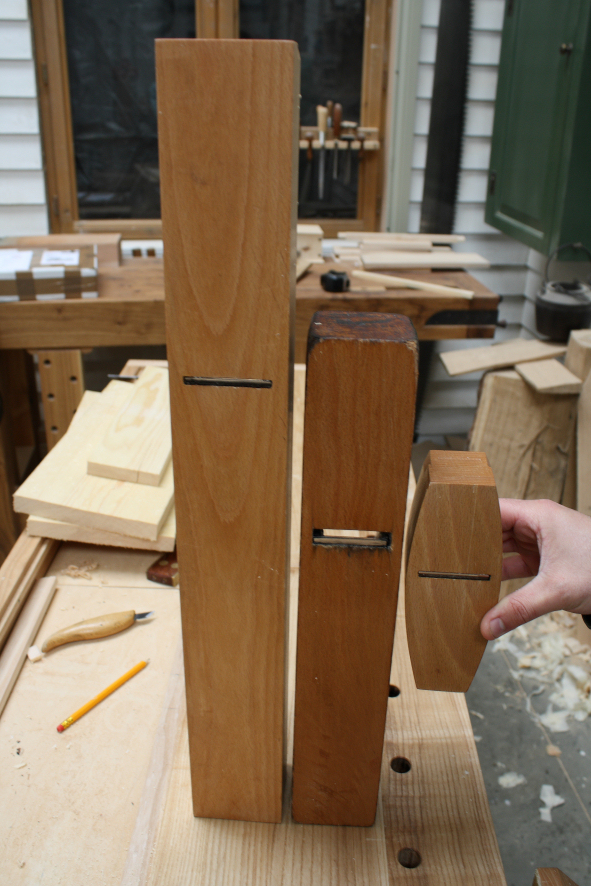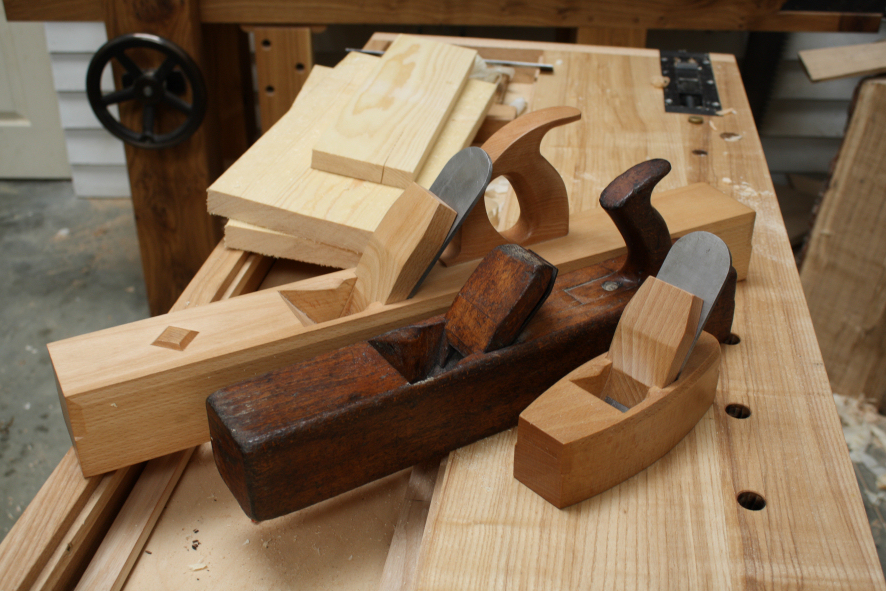How to Make an Iron for an Old Wooden Plane
Wooden Hand Planes Might Be Old Tech, But They're Not Outdated
I think for many people wooden planes bring nostalgia and a nice sense of tradition but don't necessarily seem relevant to use today.
We get used to a very different tool with metal planes, especially with some of the highly developed options now available, and so the techniques needed to set up, adjust and use them become further apart.
I use a mix of metal and wooden planes, and perhaps surprisingly it's the wooden planes that I favour when I have a heap of boards to work, as their lighter weight is much less tiring. They're always comfortable to hold and no one can deny the dreamy sound that they make as they glide across the wood, there's none of that awful squeaking of a metal planes sole when it hasn't had enough wax.
Using Wooden Hand Planes
For general board preparation I only have three wooden planes that I use all of the time.
It's not a grand collection, but it's all I need to take a rough board and make it flat and smooth. They're certainly as quick as any metal alternatives, and my wooden smoothing plane can take on anything a metal plane can, leaving a far superior finish.
If you like the romantic appeal of a wooden hand plane but never thought them to be all that practical then don't be too quick to dismiss them.
If your used to working with metal ones then there'll be a few things that seem more complex and difficult, and I'm not going to deny there's quite a heavy learning curve. But like most things if you persevere then all of a sudden it will 'click'. It's not an easy thing to be taught as its more a case of getting the feel, but with a bit of patience you'll soon start to appreciate to joy of using them.
To Learn How To Adjust Wooden Planes & Set The Iron Without Frustration, Then Have A Read Here.

The Different Types Of Wooden Planes: The long try plane for straightening. The jack or fore plane for rough, heavy material removal – note the wide open mouth for allowing the thick shavings through. The short coffin smoother with tight mouth to keep control of tear out.
Buying Old, Second Hand Wooden Planes
If you're keen to give it a go without spending a fortune, then I'd still avoid the temptation of buying an old smoother from a car boot sale. They're small and you should be able to pick one up extremely cheaply, but these planes are used for the final finishing work – they need to be set very finely to give good results, and trying to set up something rough and worn without any experience could quickly put you off wooden planes altogether.
Instead opt for something like an old fore plane, to start. These can be set for a range of heavy or fine work and will be much more forgiving when you're starting out. My fore plane (a real rough jack) looks like its been chewed on by a pack of dogs, and the iron doesn't really match the bed, but it works great as a roughing tool and I'll never part from it.
Buying New Wooden Planes
I'd always be happy to source an old jack for the rougher work, but if you want to treat yourself then I would say a new try plane would be the ideal one for starters.
You'll be setting up for a medium to fine cut, with a medium camber on the iron so there's some challenge compared to the rougher fore or jack plane. This way you'll easily build up the skills of setting up a wooden plane without having to be too precise, and once you've got the gist of it you'll quickly be able to transfer you're skills to the finer smoothing planes.

Shavings from the different types of wooden planes
Once you've mastered it, a wooden plane is in a league of it's own for simplicity, and with this comes efficiency – there's no screw drivers every time I need to touch an iron up, just a quick clunk with a mallet.
For me wooden planes can never be outdated as I need to use them daily for my job, and I certainly know I couldn't earn my living without them. There's a lot to cover on them; I could fill a book on this subject so I'll be bringing more about wooden planes soon.
See All Articles On Hand Planing
As a professional hand tool woodworker, Richard found hand tools to be the far more efficient solution for a one man workshop.
Richard runs 'The English Woodworker' as an online resource and video education for those looking for a fuss free approach to building fine furniture by hand.
Learn More About Richard & The English Woodworker.
How to Make an Iron for an Old Wooden Plane
Source: https://www.theenglishwoodworker.com/getting-the-gist-of-wooden-planes/
